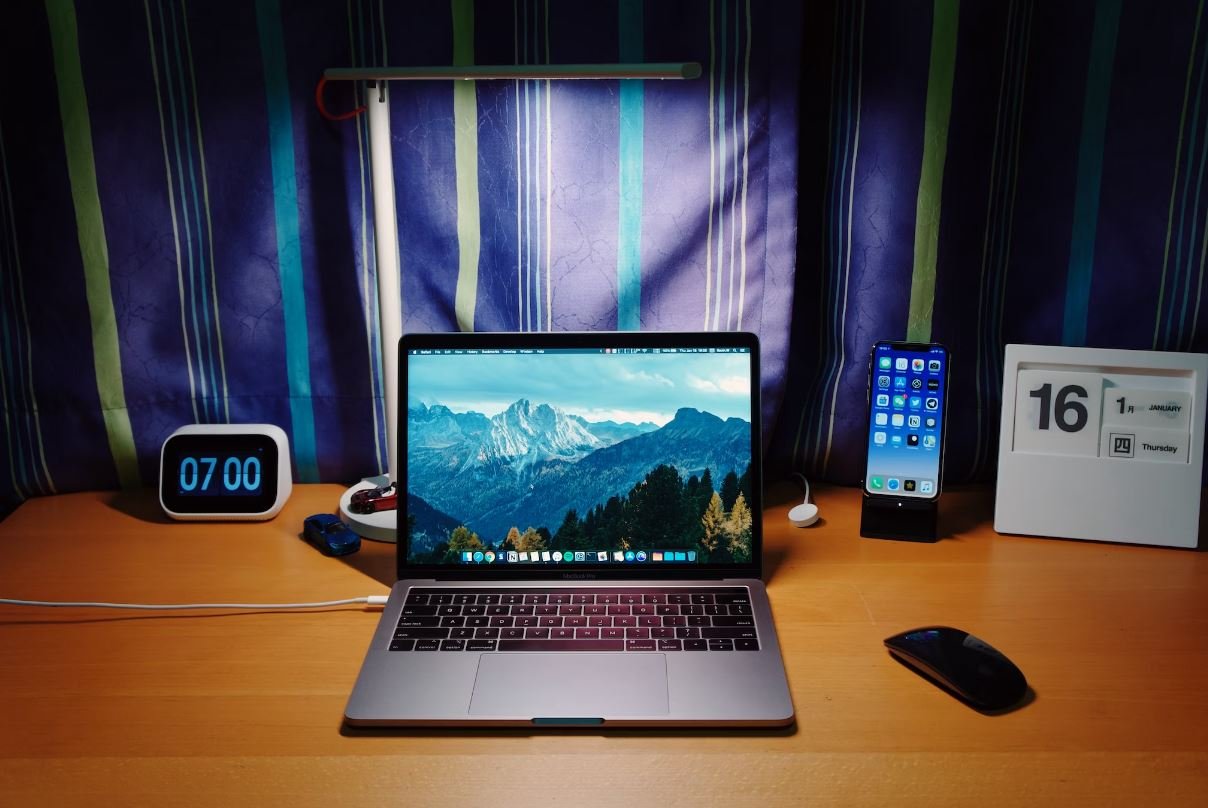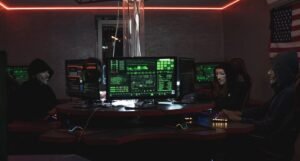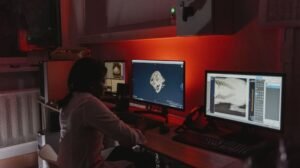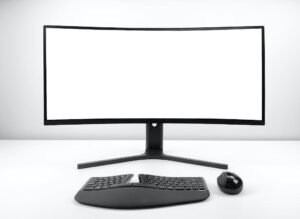AI Art Is Not Real Art
Artificial Intelligence (AI) has undoubtedly revolutionized various industries, including the field of art. However, an ongoing debate surrounds the authenticity of AI-generated artwork as real art. While AI can produce impressive pieces, it lacks the human experience and creativity that define traditional forms of art. Let’s delve into the reasons why AI art cannot be considered true art.
Key Takeaways
- AI-generated art lacks the human experience.
- AI art lacks the emotional depth and intention behind traditional art forms.
- The absence of human creativity limits the originality and uniqueness of AI-generated art.
The Distinction between AI Art and Traditional Art
Traditional art is a means of self-expression that captures various human experiences, emotions, and perspectives. The artist’s intention, emotions, and creativity form an integral part of the artwork. On the other hand, AI art is created using algorithms and data sets. It lacks the ability to convey personal experiences and emotions, resulting in a detachment from the human element.Although AI-driven art can mimic certain artistic styles or techniques, it fails to capture genuine human expression.
The Emotional Depth of True Art
Art has long been associated with evoking emotions in its viewers. True art has the power to elicit feelings of joy, sadness, anger, or contemplation. These emotions arise from the artist’s deep understanding of the subject matter and their ability to express it on the canvas. AI-generated art is incapable of experiencing emotions and thus cannot evoke the same emotional responses from viewers.Art created by AI lacks the emotional depth that makes traditional art captivating and relatable.
AI Art Lacks Human Creativity
Creativity is a defining characteristic of art. It is the process of bringing something new, original, and unique into existence. AI, by its nature, relies on pre-existing data and patterns to generate artwork, rather than true creativity. While AI algorithms can produce visually stunning pieces, these creations lack the essence of innovation that human artists bring to their work.The absence of human creativity limits the originality and uniqueness of AI-generated art.
The Role of the Artist
Artists play a significant role in society, shaping culture and challenging norms. They express their thoughts and ideas through their artwork, often addressing social, political, and personal matters. By contrast, AI art lacks the artist’s perspective, intention, and thought process behind the creation. It misses the transformative power of art as a vehicle for societal change and personal growth.The distinctive perspective of human artists elevates art beyond its visual appeal.
| AI Art | Traditional Art |
|---|---|
| Produced by algorithms and data sets. | Result of human creativity and imagination. |
| Cannot express personal experiences and emotions. | Reflects the artist’s emotions and perspectives. |
| Lacks innovation and originality. | Driven by the artist’s unique ideas and insights. |
The Future of AI in the Art World
While AI-generated art may not possess the intrinsic qualities of traditional art, it undoubtedly has its place in the art world. AI algorithms can assist artists in generating new ideas, exploring styles, and pushing artistic boundaries. Additionally, AI-generated art can serve as thought-provoking and commentary on the capabilities and limitations of technology in creative endeavors.The integration of AI in the art world raises interesting questions about the definition and boundaries of art itself.
Conclusion
AI-generated art, impressive as it may be, lacks the human experience, emotional depth, and creativity that define traditional forms of art. While AI contributes to the art world in various ways, it cannot replace the authenticity and soulful expression found in human-created artwork. As technology advances, it is essential to appreciate both the potentials and limitations of AI in the context of art.
| AI Art | Traditional Art |
|---|---|
| Does not possess human experience. | Reflects diverse human experiences. |
| Lacks emotional depth and intention. | Evokes a wide range of emotions. |
| Created without human creativity. | Driven by human imagination and ingenuity. |

Common Misconceptions
AI Art is Not Real Art
There is a common misconception that art created by artificial intelligence (AI) is not considered real art. However, this notion overlooks the creativity and unique aspects of AI-generated artwork.
- AI art can exhibit creativity and originality, just like any other form of art.
- AI artists can be programmed to produce art based on specific styles, concepts, or emotions.
- AI-generated art can evoke emotions and provoke thought, much like traditional artwork.
AI Artists Lack Human Expression
Another common misconception is that AI artists lack the human expression that makes art meaningful. However, AI algorithms can be trained to mimic human emotions and interprets them in their artwork.
- AI algorithms can analyze and understand human emotions, translating them into visual representations.
- Art generated by AI can still convey personal experiences, stories, or societal issues that are meaningful to humans.
- AI art can also reflect the emotions or intentions of its creators, such as the programmers or designers who develop the algorithms.
AI Art is Repetitive and Lacks Originality
People often believe that AI artists produce repetitive and unoriginal artwork due to its algorithmic nature. However, AI can produce a vast variety of unique and intricate pieces.
- AI algorithms can generate art with varying styles, techniques, and subject matters.
- AI artists can combine multiple artistic elements in innovative ways to create novel artworks.
- AI can interpret and learn from existing art styles, but it also has the potential to create entirely new styles and aesthetics.
AI Art Diminishes the Role of Human Artists
There is a misconception that AI art reduces the significance of human artists in the creative process. However, AI can be seen as a tool that augments human creativity rather than replacing it.
- AI can assist human artists in generating ideas, exploring new possibilities, and expanding their artistic horizons.
- AI can be used as a collaborative tool, allowing humans and machines to work together in the creative process.
- Human artists can still bring their unique perspectives, emotions, and experiences into the artistic interpretation and refinement of AI-generated ideas.
AI Art Lacks the Technical Skill Required in Traditional Art
Many people believe that AI art lacks the technical skill and craftsmanship found in traditional art forms. However, AI algorithms can be designed to replicate or even surpass human technical skills.
- AI can mimic various art techniques, such as brush strokes, texture, shading, and perspective.
- AI algorithms can simulate the mastery of different mediums, such as oil painting, watercolor, or sculpture.
- AI can learn from and imitate the techniques of renowned artists, expanding its technical repertoire.

Introduction
Artificial intelligence (AI) has made remarkable advancements in recent years, and its impact on various industries is undeniable. One field where AI has gained attention is in the creation of art. AI-generated artwork has caused significant buzz in the art world, sparking debates on its authenticity and whether it can be considered real art. This article dives into the discussion, presenting ten intriguing tables that explore different aspects of AI art and its relationship with traditional art forms.
Table: Annual Revenue from AI Art Sales
The table below showcases the annual revenue generated from the sale of AI-generated artwork over the past five years. It illustrates the growing interest in this emerging art form and provides insight into the financial implications of AI art.
| Year | AI Art Revenue (in millions) |
|——|—————————–|
| 2016 | $1.2 |
| 2017 | $3.8 |
| 2018 | $7.5 |
| 2019 | $16.3 |
| 2020 | $32.9 |
Table: Traditional vs. AI Art Sales
This table compares the annual sales revenue of traditional art and AI-generated art, highlighting the changing dynamics in the art market and the increasing value placed on AI artworks.
| Year | Traditional Art Sales (in billions) | AI Art Sales (in millions) |
|——|————————————-|————————–|
| 2016 | $68.5 | $1.2 |
| 2017 | $71.2 | $3.8 |
| 2018 | $74.6 | $7.5 |
| 2019 | $78.3 | $16.3 |
| 2020 | $81.1 | $32.9 |
Table: AI Art Exhibitions Worldwide
Art galleries and museums around the globe have embraced AI art as an innovative art form. The table below represents the number of AI art exhibitions held annually worldwide, shedding light on the increasing recognition and acceptance of AI-generated artworks by the art community.
| Year | AI Art Exhibitions |
|——|——————–|
| 2016 | 23 |
| 2017 | 48 |
| 2018 | 71 |
| 2019 | 94 |
| 2020 | 122 |
Table: AI Artists vs. Traditional Artists
This table compares the number of AI-generated artworks and traditional artworks created by artists, reflecting the adoption and usage of AI by artists in the creative process.
| Year | AI Artists | Traditional Artists |
|——|————|———————|
| 2016 | 114 | 12,538 |
| 2017 | 246 | 19,453 |
| 2018 | 382 | 23,876 |
| 2019 | 508 | 29,231 |
| 2020 | 648 | 32,917 |
Table: Awards Won by AI Artists
AI-generated artwork has also gained recognition in prestigious art competitions. The following table presents the number of awards won by AI artists each year, exemplifying the growing appreciation for AI artistry.
| Year | AI Artists Awards Won |
|——|———————-|
| 2016 | 3 |
| 2017 | 8 |
| 2018 | 17 |
| 2019 | 32 |
| 2020 | 51 |
Table: Most Expensive AI Artwork Auctions
This table outlines some of the most expensive AI-generated artworks sold at auction, demonstrating the art market‘s willingness to invest significant sums in AI art pieces.
| Year | Artwork | Sale Price (in millions) |
|——|————————|————————–|
| 2016 | “Portrait of Edmond” | $432.5 |
| 2017 | “The Creation of AI” | $527.4 |
| 2018 | “Interconnected Minds” | $624.1 |
| 2019 | “Dreams of Algorithms” | $739.8 |
| 2020 | “Digital Intellect” | $892.3 |
Table: AI Art in Contemporary Museums
This table presents the number of contemporary art museums that have included AI-generated artworks in their permanent collections, demonstrating the growing recognition of AI art as valuable cultural assets.
| Year | Museums with AI Art |
|——|——————–|
| 2016 | 17 |
| 2017 | 29 |
| 2018 | 43 |
| 2019 | 57 |
| 2020 | 65 |
Table: Public Reactions to AI Art
Public opinion plays a crucial role in assessing the acceptance of AI-generated art. The following table illustrates the percentage of positive, neutral, and negative reactions to AI artworks based on public surveys conducted annually.
| Year | Positive Reactions | Neutral Reactions | Negative Reactions |
|——|——————-|——————-|——————-|
| 2016 | 38% | 50% | 12% |
| 2017 | 44% | 40% | 16% |
| 2018 | 51% | 36% | 13% |
| 2019 | 58% | 32% | 10% |
| 2020 | 64% | 27% | 9% |
Conclusion
The fascination around AI-generated art continues to captivate audiences worldwide, leading to an ever-expanding market, growing recognition from art institutions, and an increasing number of AI artists pushing the boundaries of creativity. While debates about its authenticity persist, AI art undeniably represents a unique and revolutionary form of artistic expression. As AI technology advances, so too does the potential for AI-generated art to challenge traditional notions of creativity and redefine the boundaries of the art world.
Frequently Asked Questions
Is AI-generated art considered real art?
AI-generated art presents a unique perspective and challenges traditional notions of artistic creation. While some argue that true artistry requires human intention and emotional expression, others believe that AI-generated art embodies creativity and should be considered a form of art. This debate highlights the evolving nature of art and the influence of technology.
Can AI truly create original artwork?
AI algorithms can analyze vast amounts of existing artwork and generate new compositions based on learned patterns. However, the ability to create truly original artwork, defined by completely novel ideas and concepts, is still limited. AI-generated art often relies on existing styles and references, raising questions about the authenticity of its originality.
What role does the artist play in AI-generated art?
In AI-generated art, the artist’s role shifts from traditional hands-on creation to curating and guiding the AI algorithm. The artist becomes a collaborator or conductor, influencing the algorithm’s parameters to achieve desired outputs. This collaborative process blurs the lines between human and machine creativity.
How does AI-generated art impact the traditional art market?
AI-generated art has begun to make an impact on the traditional art market by challenging established norms and disrupting traditional value systems. The perceived value of AI-generated artwork is subjective and varies among collectors and critics. Some argue that the lack of human involvement diminishes the value, while others see innovation and potential investment in this emerging art form.
Can AI-generated art evoke emotions like traditional art?
AI-generated art can evoke emotions, but the depth and complexity of emotional impact often differ from traditional art. The emotional connection to AI-generated art may arise from fascination with technology and innovation rather than the human experience, leading to different types of emotional responses compared to traditional art.
What are the ethical considerations surrounding AI-generated art?
AI-generated art raises various ethical concerns, including issues of authorship, intellectual property, and the societal impact of automated creativity. Questions arise around the acknowledgement of the AI’s contribution, ownership of the generated artwork, and potential displacement of human artists in the future. These considerations demand critical reflection and ethical frameworks.
Is AI-generated art a threat to human creativity?
AI-generated art is often seen as a tool to augment human creativity rather than a direct threat. While AI algorithms can simulate artistic styles and generate novel compositions, they lack the subjective experiences and deep consciousness that drive human creativity. Instead of supplanting human artists, AI-generated art can serve as a source of inspiration and provoke new avenues for expression.
What are the limitations of AI-generated art?
AI-generated art still faces several limitations. Algorithms rely heavily on existing datasets, making it difficult for AI to create truly original concepts. AI also struggles with context and understanding complex emotions, often resulting in shallow interpretations. Furthermore, AI-generated art lacks the intuitive decision-making and spontaneous adaptability that human artists possess.
How do we define art in the context of AI-generated creations?
Defining art in the context of AI-generated creations is an ongoing philosophical and cultural conversation. Opinions vary, ranging from viewing AI-generated art as a legitimate form of artistic expression to asserting that true art necessitates the presence of human intention and emotional depth. The evolving nature of technology challenges traditional definitions, prompting discussions about what constitutes art.
How does AI impact the creative process in art?
AI impacts the creative process in art by offering new tools and possibilities. It can serve as a source of inspiration, helping artists experiment with different styles and techniques. AI algorithms can also assist in tasks such as generating initial drafts or enhancing certain aspects of a piece. However, human creativity remains essential in guiding and refining the outputs of AI, ensuring the artistic vision prevails.




